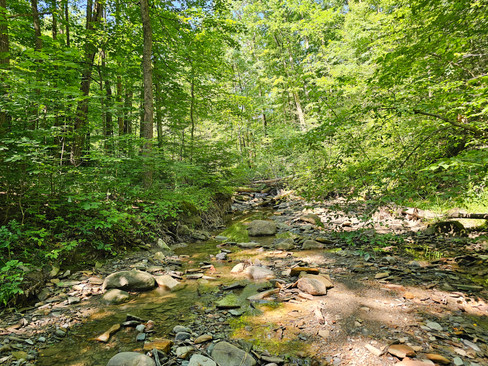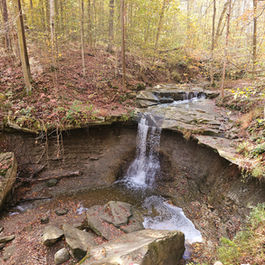Hiking the Perkins Trail: Hardest Hike in Cuyahoga Valley National Park?
- Dan Wagner
- Jul 7
- 3 min read
Updated: Jul 31
The Perkins Trail in Cuyahoga Valley National Park offers a challenging yet rewarding hike through some of the park’s more rugged terrain. This 4-mile loop features steady climbs, uneven footing with roots and rocks, and several creek crossings that add to the adventure. Towering trees provide plenty of shade, while quiet streams and deep ravines offer moments of stillness along the way. The trail also passes the historic Everett Covered Bridge, a picturesque 19th-century span over Furnace Run. Though rated difficult, the trail is manageable for most and often linked with the nearby Riding Run Trail for those looking to extend their hike.


Trailhead elevation 748'
Water at two crossings of Furnace Run
Don't miss wading in Furnace Run below the covered bridge after the hike
Hiking the Perkins Trail
It’s another sweltering July morning in the valley as Heather and I set out to hike the Perkins Trail—often called the most challenging hike in the park. We arrive at the Everett Covered Bridge Trailhead around 8 AM, which also serves as the starting point for the Riding Run Trail and Furnace Run Trail, and head out right away. Within a hundred yards, we reach the Everett Covered Bridge, where we pause to snap a few photos.
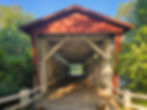
Before continuing, we take a short detour below the bridge to Furnace Run and snap a few more photos of the early sunlight filtering gently through the trees.

The bridge has a tragic origin: on a winter night in 1877, local farmer John Gilson and his wife found the ford across Furnace Run frozen over. Forced to seek another crossing, Mrs. Gilson was thrown from their buggy into the stream. Mr. Gilson lost control of the horse and was swept away. She survived. His body was recovered four days later. In response, the community built the covered bridge that still stands today—thanks to years of restoration and care.
Beyond the bridge, the trail follows a short section of Old Everett Road. I hiked the Perkins Trail years ago, back when this stretch was still a crumbling strip of asphalt—an eyesore cutting through the landscape. Today, nature has nearly erased it. The road is all but gone, quietly absorbed back into the forest.

A few hundred feet later, we veer left and disappear into the forest.

Shade from dense hardwoods and the occasional pine offers welcome relief as we make our way over gently rolling terrain. A short staircase leads us to an overgrown patch before the trail levels out onto a quiet, forested plateau.
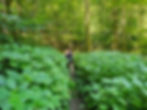
About a mile in, we reach the beginning of the loop, marked clearly by a trail sign. Up to this point there’s not much to see in terms of views other than the covered bridge, but conversation with Heather more than makes up for it.

A little farther in, the forest opens to a grassy corridor where tall blades brush both sides of the trail. About halfway through this stretch, we come across a piece of rusted farming equipment off to the left. No idea what it is or how long it’s been there, but it’s a cool little discovery.

Beyond the grasses, the trail quickly veers and drops steeply downhill. At the bottom, we rock hop across a mostly dry stretch of Furnace Run.
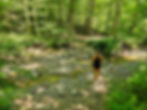
A gradual climb gives way to another sharp descent, followed by a second stream crossing and one last steep uphill push.

From there, the trail winds through dense forest before rejoining the main path and leading us back to the bridge. We return to the stream below, slip off our shoes, and wade into the cool water—snapping a few final shots of the bridge before heading out.

The Perkins Trail is an easy hike with a few decent climbs, though nothing Heather or I would call difficult. We’ll be back soon, probably pairing it with the Riding Run Trail and/or Furnace Run Trail for a longer loop. Fingers crossed that next time it won't feel like we're hiking through a furnace.
_edited.png)

















